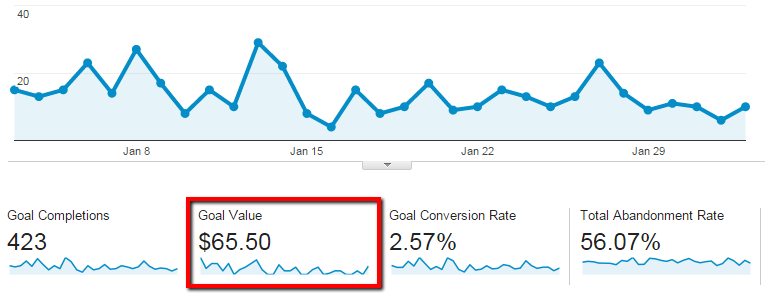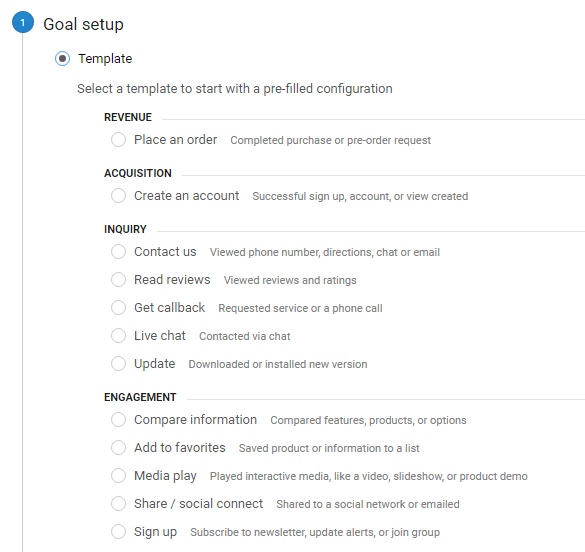Comprehensive List of What Data Is Google Analytics Goals Unable to Track
Demystifying Google Analytics Limitations: Reveal What Information Goals Can not Track
In the world of electronic analytics, Google Analytics stands as a powerful device that provides beneficial insights into internet site efficiency and individual behavior. Nevertheless, in the middle of its capabilities, there exist limitations that typically go undetected. Comprehending what Google Analytics can not track is critical for an extensive grasp of data analysis and decision-making procedures. From the complexities of user communication with dynamic web content to the complexities of cross-device customer journeys, these limitations lost light on areas that might stay obscured from standard analytics perspectives. By deciphering these restraints, a clearer image emerges, enabling even more informed approaches and fine-tuned understandings right into customer interaction and conversions.

Individual Communication With Dynamic Content
User interaction with vibrant content plays a critical role in understanding customer actions on sites and maximizing the overall individual experience. Dynamic web content refers to aspects on a web page that can transform without the requirement for a complete page reload. This consists of interactive elements such as pop-ups, sliders, kinds, and video clips that react to user activities in real-time. By tracking customer interactions with vibrant content, web site owners can obtain valuable insights into individual interaction, preferences, and habits.
Google Analytics provides different tools to track user interactions with dynamic material, such as event tracking and digital pageviews. Occasion monitoring permits you to monitor specific customer activities, like clicking a switch or viewing a video, providing information on just how users engage with vibrant aspects. Online pageviews can be used to track interactions that do not cause a brand-new web page tons, offering a thorough sight of customer interaction with dynamic material. By evaluating this data, internet site proprietors can make informed choices to improve user experience and drive conversions.
Cross-Device User Journeys
Exactly how can modern analytics devices track the complicated courses users take across numerous devices in their on the internet trips? Cross-device user trips present a significant difficulty for monitoring and evaluating customer behavior properly. As individuals interact with web sites or apps using numerous devices such as mobile phones, desktop computers, and tablets, it comes to be important to recognize just how they move in between these systems to maximize user experience efficiently.
Google Analytics deals with restrictions in tracking cross-device individual trips because of privacy concerns and technical restraints - what data is google analytics goals unable to track. While it can give understandings into specific tools' interactions, tracking a smooth user journey across numerous devices stays a challenge. This limitation can result in incomplete data and fragmented individual understandings, making it hard for services to develop a unified sight of the consumer trip
To address this issue, services can use advanced analytics devices that provide cross-device monitoring abilities, enabling them to get a more holistic understanding of user behavior. By leveraging these tools, organizations can link the void in tracking cross-device individual journeys and optimize their electronic methods for a seamless customer experience.
Offline Conversions and Acknowledgment
As companies browse the challenges of tracking cross-device customer trips, another pivotal aspect to consider is the world of offline conversions and acknowledgment in the world of information analytics. While Google Analytics provides useful insights right into on the internet user actions, it fails when it concerns tracking conversions that happen offline. This constraint poses a considerable challenge for organizations that have both online and offline sales channels.
Offline conversions, such as acquisitions made in physical shops or with telephone call facilities, are important to understanding the total client trip. Without the ability to associate these offline conversions to particular on-line communications, businesses might battle to precisely measure the impact of their electronic marketing efforts.
To address this gap, services can check out different remedies such as integrating CRM systems with on the internet analytics devices or utilizing special discount codes that can be mapped back to on the internet campaigns. pop over to this web-site By connecting the gap between online and offline data, companies can obtain a more extensive understanding of their consumers' habits and boost their total marketing methods.
Person User Identification
In the realm of information analytics, the capability to precisely identify specific customers throughout numerous on the internet touchpoints is a crucial challenge for organizations looking for to customize and enhance their marketing techniques. While Google Analytics supplies important insights into customer actions and communications, it falls short in enabling the identification of details people due to personal privacy problems and technological constraints. Google Analytics makes use of one-of-a-kind identifiers such as cookies to track user sessions and actions, yet these do not equate to recognizing individual customers in a personal feeling.

Data From Secure Pages
In spite of the boosting occurrence of protected web pages on websites, getting data from these encrypted sources presents a special challenge for electronic analytics platforms like Google Analytics. Protect pages, suggested by HTTPS in the URL, secure data exchanged in between the customer's internet browser and the website's server to make certain privacy and safety and security. While this encryption is important for safeguarding delicate information, it also postures constraints for tracking individual actions and event analytics information.
Google Analytics encounters challenges in collecting comprehensive details from protected web pages due to the encryption methods in place. Because of this, specific information points such as recommendation resources, keyword searches, and even some individual communications may not be totally recorded when customers access a site through a protected connection. This restriction can influence the accuracy and efficiency of the data analysis, resulting in gaps in comprehending customer actions and preferences on safe and secure web pages.
To navigate this obstacle, electronic experts may need to explore alternate tracking approaches or utilize various other tools especially developed to gather insights from safe and secure web pages. By adapting strategies to accommodate these limitations, organizations can still derive important analytics despite the constraints offered by encrypted links.
Conclusion
To conclude, Google Analytics has constraints in tracking individual communication with dynamic content, cross-device individual journeys, offline conversions, private customer identification, and information from safe and secure pages. These constraints prevent an extensive understanding of individual habits and might bring about gaps in information analysis. In spite of its beneficial understandings, Google Analytics may not provide a total photo of customer engagement throughout numerous touchpoints. It is important for services to be familiar with these constraints and consider extra tools for an extra alternative sight of their data.
Customer interaction with dynamic web content plays an important duty in go to this website understanding individual habits on web sites and optimizing the total user experience. By tracking customer communications with dynamic content, internet site owners can acquire useful understandings into customer interaction, choices, and behaviors.
Google Analytics utilizes one-of-a-kind identifiers such as cookies to track individual sessions and habits, yet these do not correspond to recognizing private users in a personal sense.
As an outcome, particular information points such as these details referral resources, keyword searches, and also some user interactions may not be fully recorded when individuals access a website through a protected connection.In verdict, Google Analytics has limitations in tracking individual communication with vibrant content, cross-device user trips, offline conversions, individual user identification, and data from protected pages.